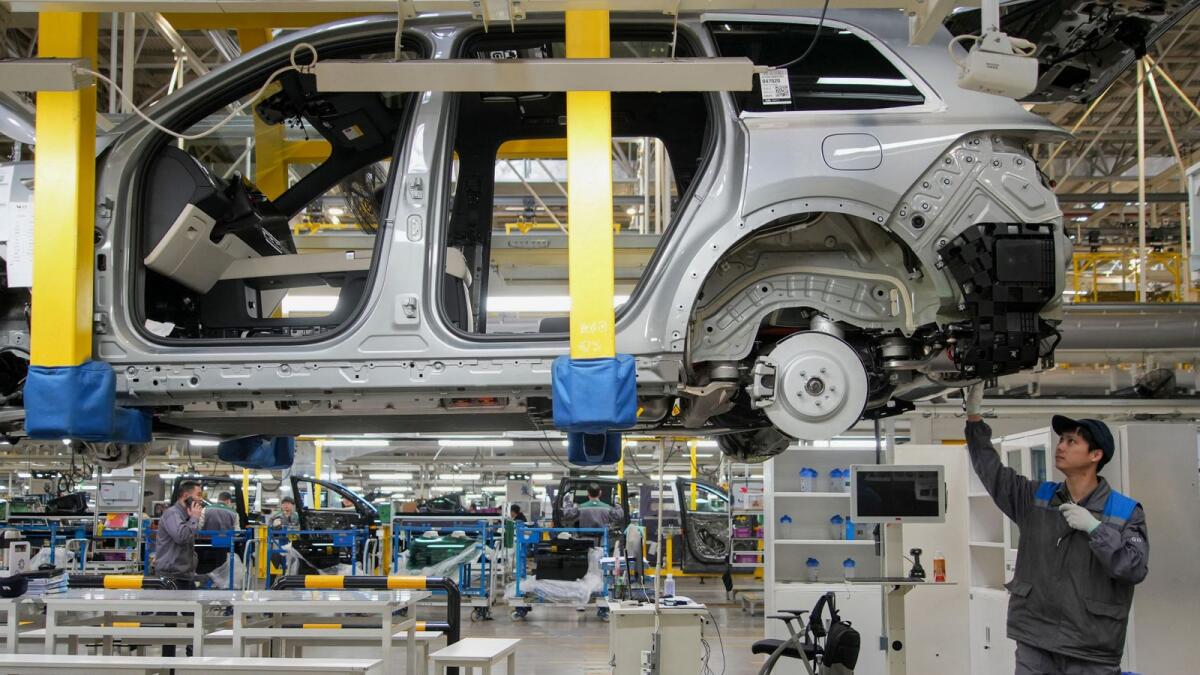China’s manufacturing activity in June saw a decline for the second consecutive month, with a Purchasing Managers’ Index (PMI) of 49.5, below the 50-mark separating growth from contraction. This was in line with expectations and raised concerns for further stimulus to boost the struggling economy. Xu Tianchen, a senior economist, noted that the official PMI may not fully capture the current export momentum, which has been a major economic driver this year. However, external and domestic demand remain insufficient to absorb China’s manufacturing capacity, hindering a recovery in producer prices.
The NBS survey revealed contraction in various key areas such as new orders, raw material stocks, employment, supplier delivery times, and new export orders, despite the production sub-index being above 50. China’s exports exceeded forecasts in May, but uncertainties loom due to escalating trade tensions with Western economies. Additionally, an ongoing property crisis continues to dampen domestic demand. The non-manufacturing PMI, which includes services and construction, fell to 50.5 in June from 51.1 in May, signaling a slowdown in economic activity.
Amidst the weak PMI figures, analysts anticipate the Chinese government to implement more policy support measures. Monetary easing is limited due to pressure on the Chinese currency, leading fiscal policy to take precedence in stimulating domestic consumption. Hao Zhou, chief economist at Guotai Junan International, emphasized the need for increased debt issuance by the central government to boost overall domestic demand, as local-government debt and deflationary pressure pose challenges to recovery prospects. Officials aim to reduce the economy’s reliance on the property sector by actively promoting new growth engines. Premier Li Qiang highlighted the growth of new industries as key to healthy economic development and expressed optimism for steady improvement over the second quarter.
As the Third Plenum approaches on July 15-18, where China’s top Communist Party officials will gather for a five-yearly meeting, economists and investors await further insights into the government’s economic strategy. The uncertain global trade environment and weak domestic demand underscore the need for decisive policy actions to support China’s economic recovery. The government’s focus on boosting fiscal stimulus, accelerating affordable housing sales, and promoting new industries reflects a proactive approach to addressing economic challenges. Efforts to diversify the economy and reduce reliance on traditional sectors are deemed essential for long-term growth and stability. Market observers will closely monitor policy announcements and economic data for signals of China’s economic trajectory in the post-pandemic era.
In conclusion, China’s recent economic data points to ongoing challenges in both manufacturing and services sectors, necessitating additional policy support to bolster growth. While external uncertainties and domestic demand constraints persist, the government’s commitment to stimulating economic activity through targeted measures offers hope for a gradual recovery. The upcoming Third Plenum presents an opportunity for a comprehensive review of China’s economic policies and priorities, with potential implications for investors and businesses. In navigating the complex economic landscape, proactive government intervention and structural reforms are crucial to sustaining growth and fostering resilience against external shocks. As China adapts to evolving global dynamics, a strategic and forward-looking approach to economic management will be essential in steering the economy towards sustainable development and prosperity.











